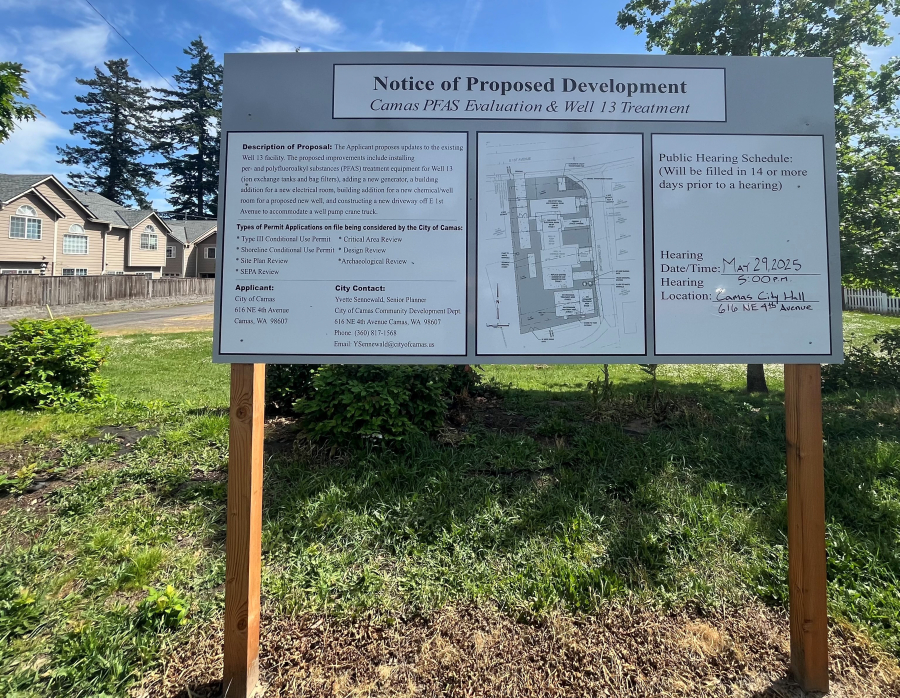Recent tests show significantly elevated levels of “forever chemicals” in Camas’ drinking water system.
Camas Utilities Manager Rob Charles told city officials Monday that recent testing at Well 13 showed “forever chemicals” levels at 10 times the federal action level for PFAS treatment.
Per- and polyfluoroalkyl substances are a group of toxic, synthetic chemicals commonly known as PFAS or forever chemicals.
“We turned it on in early June, and our first sample was 32.6 parts per trillion, the highest we’ve seen,” Charles said of Well 13.
Under state regulations, the city is allowed to take two samples and use the average.
City staff had hoped the second reading would be much lower than the first, but Charles said the second round of sampling at Well 13 showed even higher PFAS levels at 46.9 parts per trillion, giving the well an average PFAS reading of 39.75 parts per trillion.





